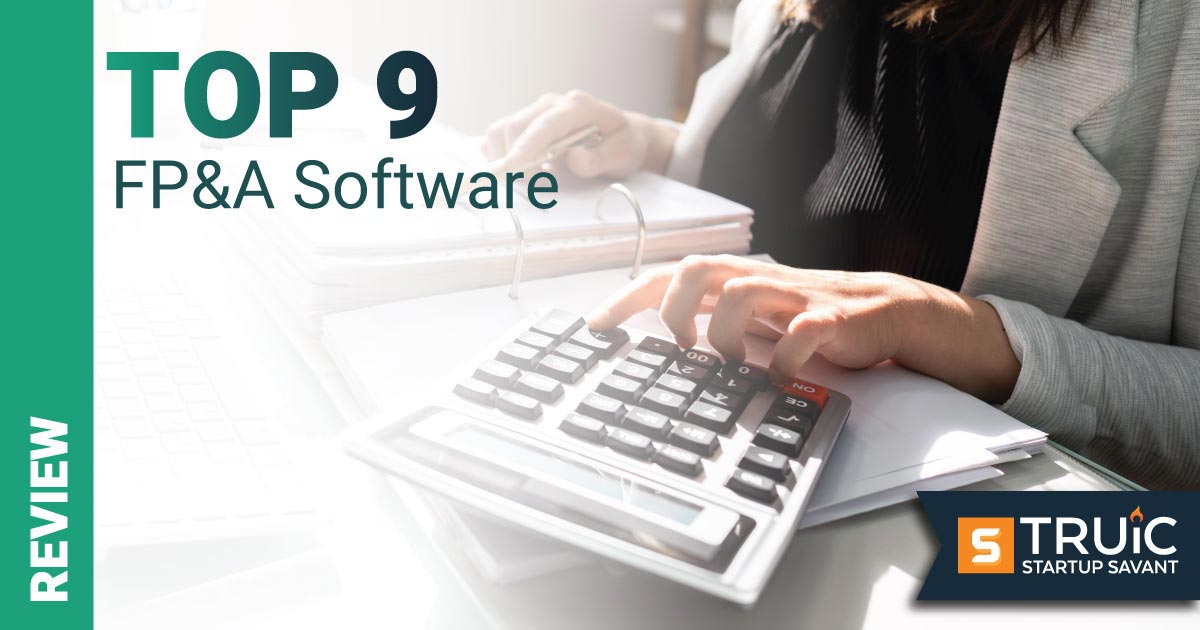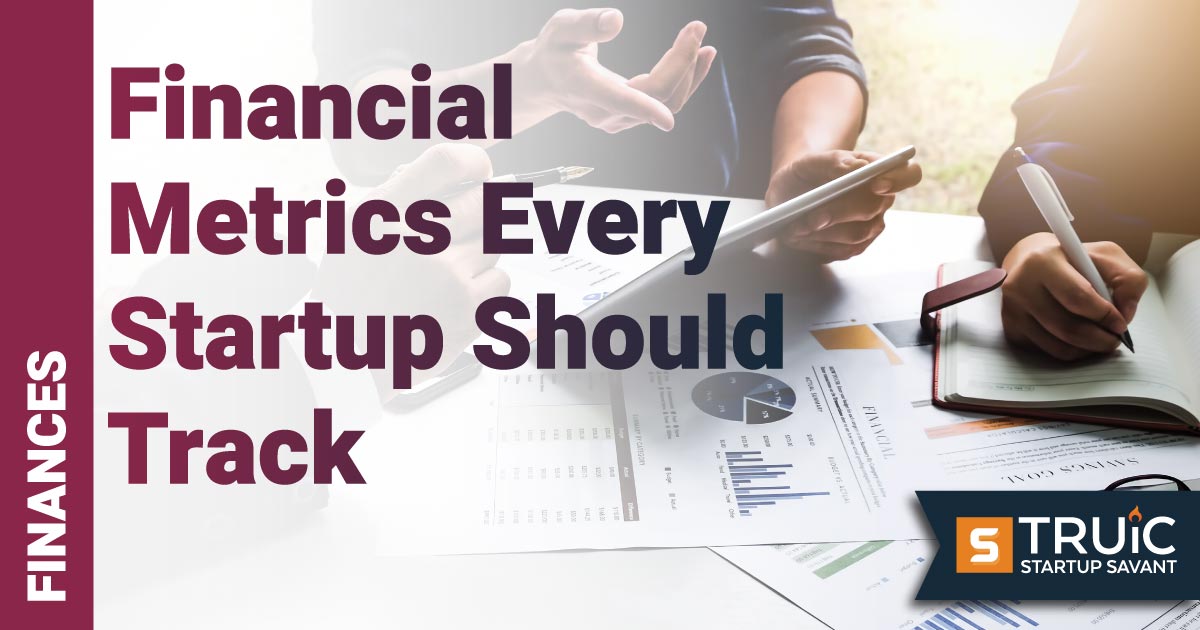9 Best FP&A Software for Startups 2024

Last Updated: By Madison Holt
As a startup, there’s no question that it's important to streamline your financial planning and analysis; with today's robust tech, certain software programs can be your best allies for growth and cost control.
The list we’ve compiled in this guide is a comprehensive outline to the best financial planning and analysis (FP&A) software for startups. If you've launched a new venture or are thinking about it, then this article will help you explore the top platforms that can make the daunting task of financial management a breeze.
Given the dynamic nature of startups, a tailored FP&A software solution can not only provide real-time visibility into your business performance but also assist in making informed decisions. It just might be the key differentiator in your journey to stay ahead of the competition, scale efficiently, and build a sustainable business model.
Top Financial Planning and Analysis Tools
Before we dive into the list of top picks, let's first understand what FP&A software is and why it's important. Financial planning and analysis software packages/suites are digital tools that provide insights into a company's financial health. These tools facilitate budget planning, forecasting, modeling, consolidation and reporting, allowing companies to analyze their financial data in detail and plan for the future, ultimately aligning business objectives with their financial goals.
For startups, using an effective FP&A tool can mean the difference between scaling successfully or struggling to keep up with financial challenges. With limited resources and immense pressure to deliver results, startups can benefit greatly from the efficiency, accuracy and strategic insights offered by these software options. Let’s start at the top of the list.
1. Workday Adaptive Planning
For startups looking for a cohesive platform designed to facilitate planning and decision-making, Workday Adaptive Planning provides robust financial software. With an emphasis on collaboration, this application offers self-service reporting and interactive dashboards to keep everyone on the same page.
It uses artificial intelligence and machine learning to automate routine tasks and make insightful recommendations, and its advanced analytics allows users to create and test models to identify potential risks and opportunities. Better yet, with in-memory calculations, all plans, reports, and dashboards are continuously updated, keeping you in the know with the latest information.
Pros
- Offers self-service reports and interactive dashboards for streamlined collaboration.
- Uses artificial intelligence and machine learning for automation and smart recommendations.
- Provides advanced analytics for risk and opportunity assessment.
- Ensures real-time updates through in-memory calculations.
Cons
- Pricing information is not directly available.
- Some users may find the interface less user-friendly compared to other software.
Pricing
While Workday Adaptive Planning does not directly provide pricing information on its website, interested parties can reach out to their sales team for custom quotes. They also offer a free trial that you can sign up for to test out the software.
2. Datarails
Datarails is an AI-powered financial platform that allows users to keep their Excel models and spreadsheets while automating repetitive tasks like consolidation and reporting. This platform is capable of integrating with popular accounting, ERP, and CRM software, allowing you to consolidate data from across your organization.
On top of automating tasks, it provides visual overviews of key metrics using dashboards, making data analysis easier. One of the unique features Datarails offers is an AI assistant called "FP&A Genius," which provides conversational access to consolidated finance data to answer questions.
Pros
- Allows users to maintain existing Excel models and spreadsheets while automating tasks.
- Integrates with popular accounting, ERP, and CRM software.
- Provides an AI assistant for accessing consolidated finance data.
- Offers task automation, including consolidation and reporting.
Cons
- The platform’s focus on Excel may be a deterrent for non-Microsoft 365 users.
- Pricing varies, implying costs could be high based on specific needs.
Pricing
Datarails offers custom pricing packages that are based on factors such as your financial reporting, planning or analysis goals, the number of users, and integrations. They allow for unlimited reports, dashboards, or PowerPoints at no extra cost.
3. Cube
Cube is a spreadsheet-native FP&A solution that aims to make work more efficient for finance teams. With Cube, you can automate tasks and gain quicker access to answers, letting you focus on strategic analysis and decision-making.
It offers advanced planning and modeling features that can significantly cut down your planning cycle time. It also provides centralized data management, unifying all data sources into one trusted source of truth. Cube seamlessly integrates with Excel and Google Sheets, which makes collaboration easy.
Pros
- Automation of tasks allows for a focus on strategic analysis and decision-making.
- Offers advanced planning and modeling features.
- Provides centralized data management to unify all data sources.
- Seamless integration with familiar tools like Excel and Google Sheets.
Cons
- Pricing may be steep for some startups.
- Interface might not be intuitive for nonspreadsheet-savvy users.
Pricing
Cube comes with three pricing tiers. The Essentials Plan costs $1,250/month and features a basic ERP connection, two admins & two contributors, unlimited scenarios, and spreadsheet integrations. The Premium Plan is priced at $2,450/month and includes premium ERP connections, three admins & five contributors, a dedicated customer success manager, and multi-currency capabilities. For larger startups or organizations, the Enterprise Plan offers a customized package based on the specific needs of the team.
4. Prophix
Prophix is a comprehensive financial planning software suite targeted towards startups and established businesses alike. This finance application functions as a “pivot tool” to shift finance professionals from manual workloads to making strategic inputs of high value. Prophix focuses on process automation to eliminate risks associated with disparate databases, and the software's simplicity in terms of usage and the minimal IT support or maintenance it requires are some of its key positives.
Pros
- Prophix is a user-friendly platform that requires minimal IT assistance.
- It offers automated processes to eliminate risks from disconnected databases.
- The software helps finance professionals concentrate on strategic tasks over administrative workloads.
Cons
- Pricing information is not directly visible on their website.
- The target user is primarily corporate, which might be intimidating for some startups.
Pricing
Pricing information isn't directly available on the Prophix website, but prospective customers can request a demo and additional information about the software to get an idea about pricing.
5. Jirav
Jirav serves as a comprehensive software solution designed exclusively for accounting and financial professionals. It offers a great range of features, including forecasting, budgeting, reporting, and dashboarding.
Jirav also allows integration with over 200 apps, such as QuickBooks, NetSuite, and Salesforce. The software performs multiple functions, including annual operating plans, rolling forecasts, scenario planning, departmental budgeting, and workforce planning.
Pros
- All in one forecasting, budgeting, reporting, and dashboarding.
- Supports integration with over 200 applications.
- Tailored for various industries like life science, SaaS, investment management, CPG/ecommerce, and manufacturing.
Cons
- Pricing might be steep for very small startups.
- The number of features offered might be overwhelming for some users.
Pricing
Jirav offers three pricing tiers:
- Starter plan cost $10,000/year. This includes planning and reporting on performance vs. actuals through next year at a company level and is recommended for small finance teams.
- Pro plan cost $15,000/year. It offers the ability to collaborate on multi-year plans and scenarios with departmental budgeting.
- Enterprise plan pricing is available upon request and is designed for teams requiring long-range complex planning and premium integrations.
6. Planful
Planful is a financial performance management platform. Offering both online and in-person events, conferences, and webinars worldwide, Planful provides numerous learning opportunities for its users. The software comes with easily accessible professional training and supports instruction as well; its resources allow startups to explore the advanced financial management platform within, gain expert knowledge, and stay up to date on the industry's news and trends.
Pros
- Comprehensive learning opportunities through events and conferences.
- Readily accessible online training and support.
- Resources allow the exploration of the management platform and the gaining of expert knowledge.
Cons
- Pricing information is not provided upfront on the website.
- The high level of detail and options may be overwhelming for some startups.
Pricing
Planful does not provide direct pricing information on its website. To know more about their pricing structure, prospective users can request a demo of the platform.
7. Vena
Vena is a highly versatile financial planning and analysis (FP&A) software specially designed for startups. It is an all-inclusive platform that transforms Excel into a comprehensive FP&A tool by integrating features such as template and version control, drill-throughs, and speedy reporting. Vena’s aim is to make financial management more efficient and easier by centralizing data, streamlining processes, and automating tasks to free users for more intensive analytical tasks.
Pros
- Enhances Excel with additional FP&A features
- Simplifies processes and automates tasks
- Provides strong security measures
- Offers additional modules for workforce and capital planning
Cons
- Customization may require a learning curve
- Pricing information is not readily available
Pricing
Vena offers two strategic plans: the Professional Plan and the Complete Plan. The Professional Plan is perfect for startups looking for flexibility while scaling their businesses. It encompasses the Vena platform, a customer success manager, standard support, and a customer portal.
For startups in need of a more comprehensive package, the Complete plan is an ideal choice. Aside from featuring everything in the Professional Plan, this option includes Vena Insights, premium support, a sandbox environment, and expert-managed services.
8. Anaplan
Anaplan is another noteworthy FP&A software platform whose unique approach encourages "connected planning" to facilitate both strategic and operational business planning. With solutions like financial planning, budgeting, forecasting, and profitability modeling, Anaplan allows startups to integrate different planning modules and activities to enhance efficiency.
Anaplan also stands out for its capability to review thousands of scenarios and help avert potential risks. This could provide timely insights to stakeholders, assisting in reducing production costs and forecasting time, and continually delivering results.
Pros
- Promotes the concept of "connected planning"
- Provides a range of solutions, including financial planning, budgeting, and forecasting
- Capable of reviewing thousands of scenarios
- Recognized by reputable entities such as Gartner and IDC
Cons
- A steep learning curve may be required
- Pricing details are not explicitly stated
Pricing
Anaplan doesn’t publicly show its pricing details, but it offers a demo setup for interested clients. Prospective users are encouraged to contact the company directly to get specifics about pricing and features.
9. Centage
The “Planning Maestro” by Centage is an FP&A software solution that operates in the cloud, giving startups complete control over their budgeting, forecasting, and data analysis. The software's formula-free design makes it easy to create sophisticated financial models and perform in-depth analytics.
With Planning Maestro, startups can potentially cut budgeting cycles in half through intuitive automation and generate reports quickly. It promotes financial accuracy by automatically populating related records and eliminating redundant data entry as a result. Notably, it takes into account GAAP and IFRS standards compliance via built-in accounting logic.
Pros
- Offers a formula-free design for easy creation of sophisticated financial models
- Provides intuitive automation to streamline budgeting cycles
- Ensures accuracy with automatic updates of related records
- Considers both GAAP and IFRS standards
Cons
- The interface may not be user-friendly for some users
- Additional features may increase complexity
Pricing
Centage offers three tiers of pricing: Standard at $750 per month, Professional at $1,000 per month, and Enterprise at $1,500 per month.
The Standard tier is best for smaller companies and includes driver-based automations and formula-free modeling. The Professional tier adds analytics, scenario planning, and workflow management features, while the Enterprise tier provides additional features such as custom KPIs, department views, SSO authentication, and unlimited support. All pricing is billed annually.
How to Choose FP&A Software
As a startup, chances are high that you're looking for a tool that can make sense of your finances, help you plan for the future, and let you react swiftly to changes in your business environment.
Here are some key factors to consider when choosing FP&A software for startups.
Cost
Let's face it – budgets matter, particularly for startups. Each penny counts, and the price of your FP&A software should align with what you can afford. However, it shouldn't be just about finding the cheapest option. Ensure that the software provides value for the price. This involves assessing its capabilities against your startup's financial planning needs.
Functionality
Your chosen software should not only be affordable but functional. Consider what features you need from a financial planning tool - cash flow forecasting, budgeting, scenario modeling, and various other features that might be crucial to your operations. Make sure that the software can sufficiently handle these tasks. Otherwise, you might end up paying for a premium service you can't fully utilize.
Scalability
Startups often experience rapid growth and changes, which is why it’s so important to choose FP&A software that will grow with your business. Think about your long-term plans and evaluate whether the software will still be applicable as your startup evolves. Looking at things like the maximum number of users, the amount of data it can handle, and how easily it can integrate with other systems is essential.
Ease of Use
Last but certainly not least, the usability of the software is a critical consideration factor. Your team will likely be using this tool every day, so it's important it doesn't become a source of frustration. A steep learning curve can lead to inefficiency and hinder your financial planning process. It’s best to choose FP&A software that has a user-friendly interface and robust customer support.


